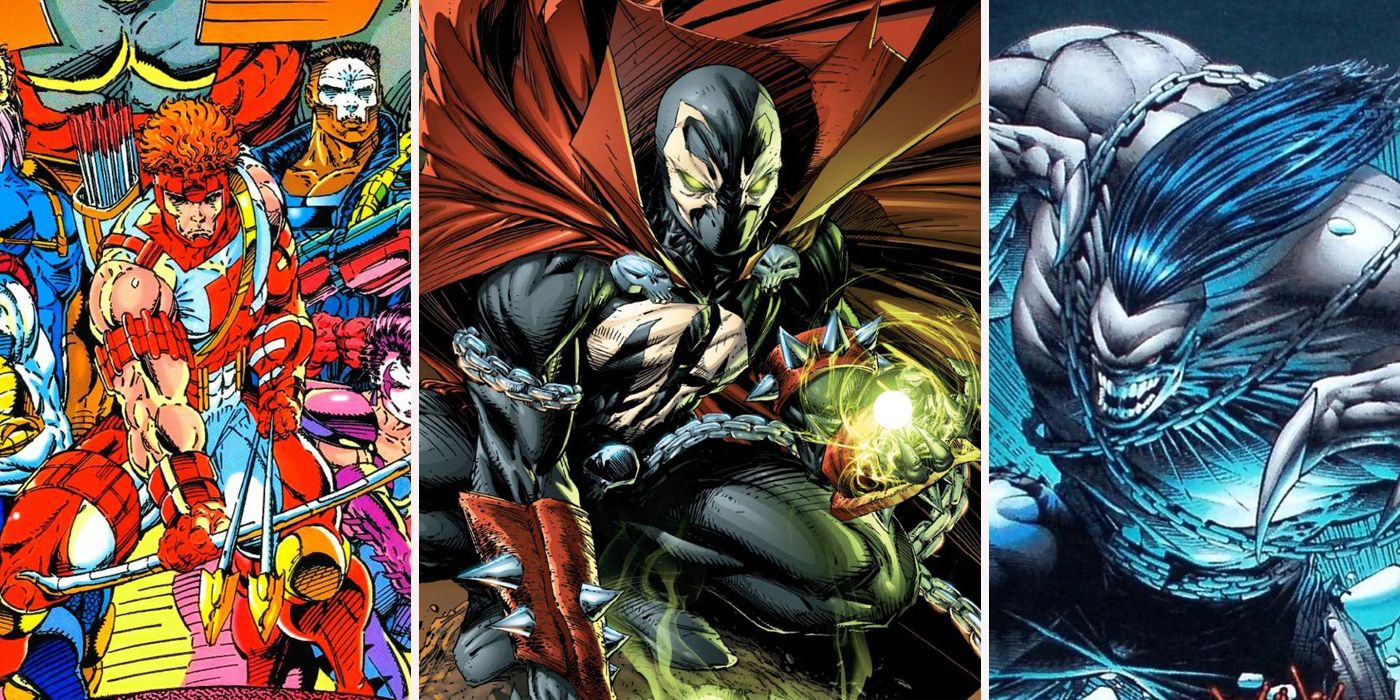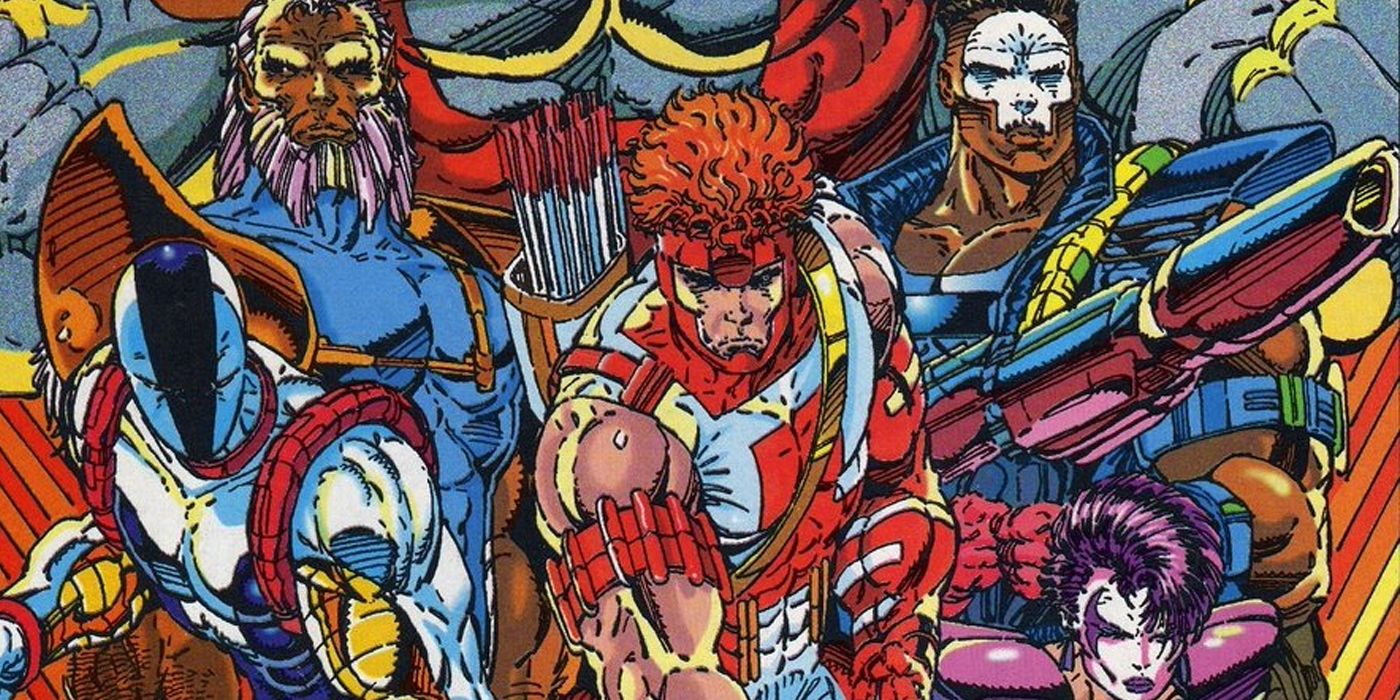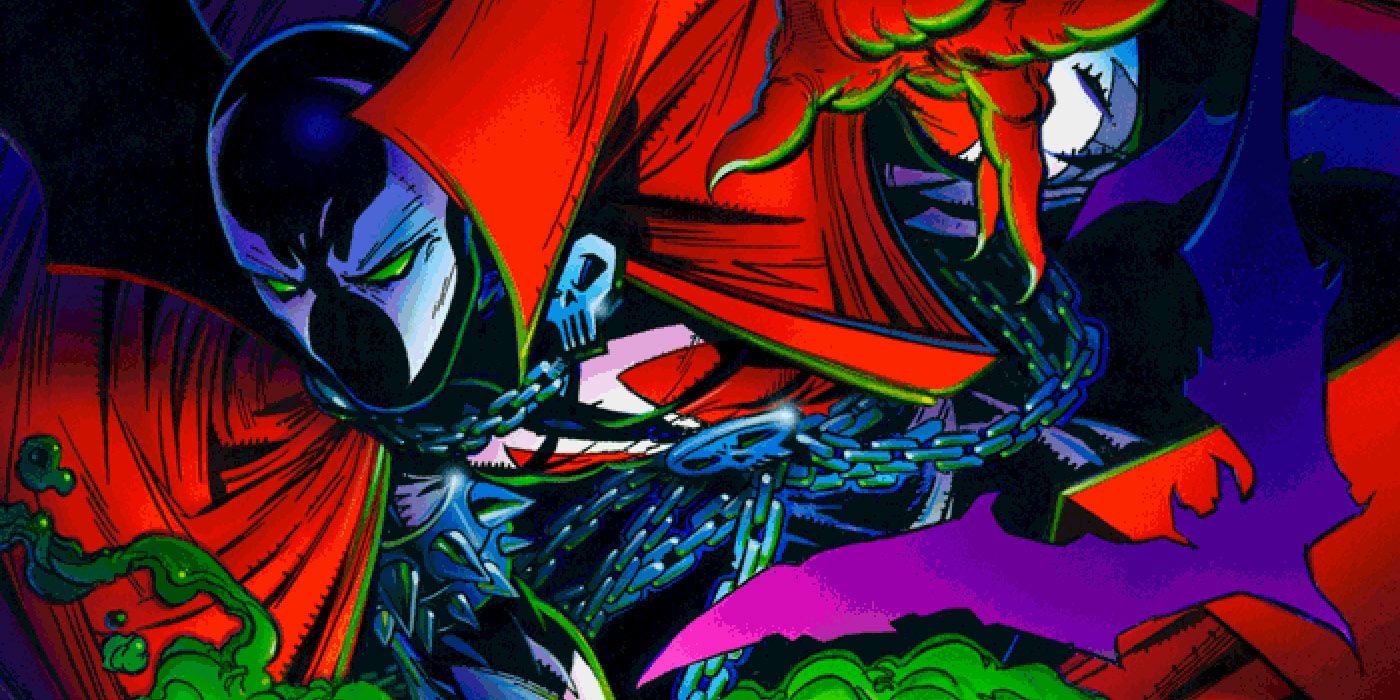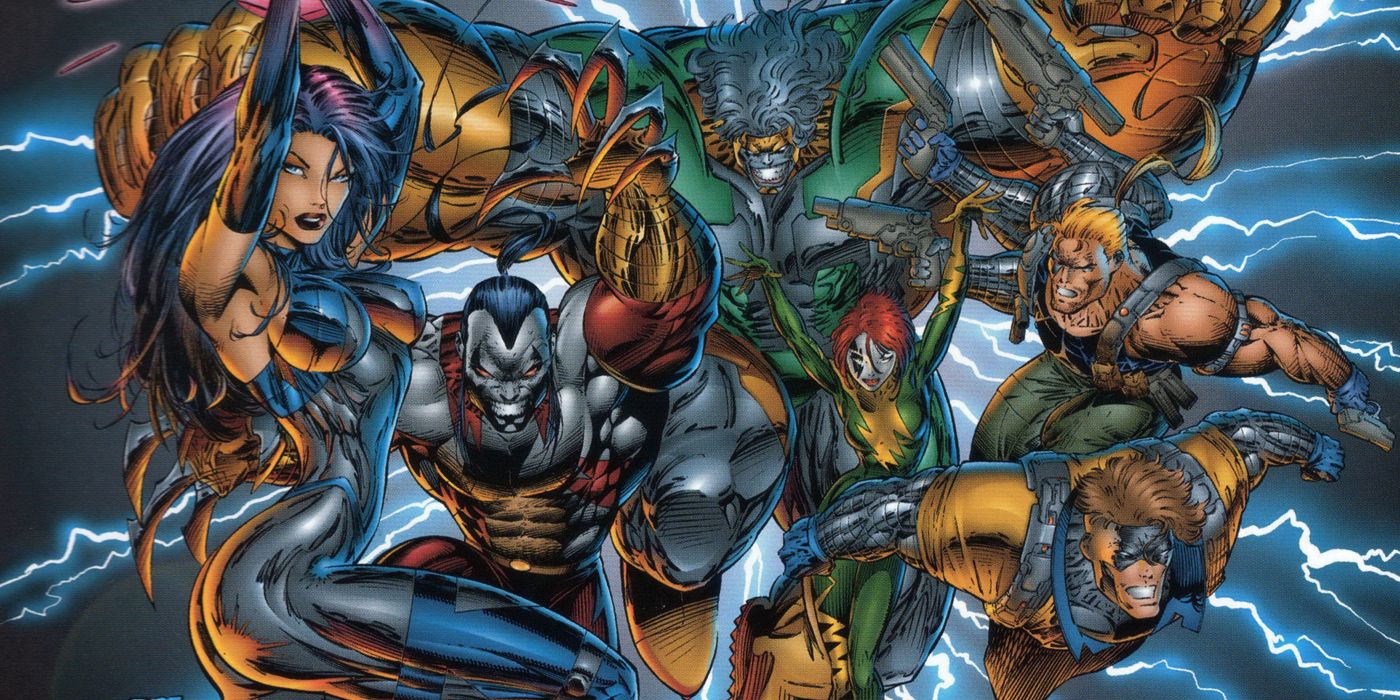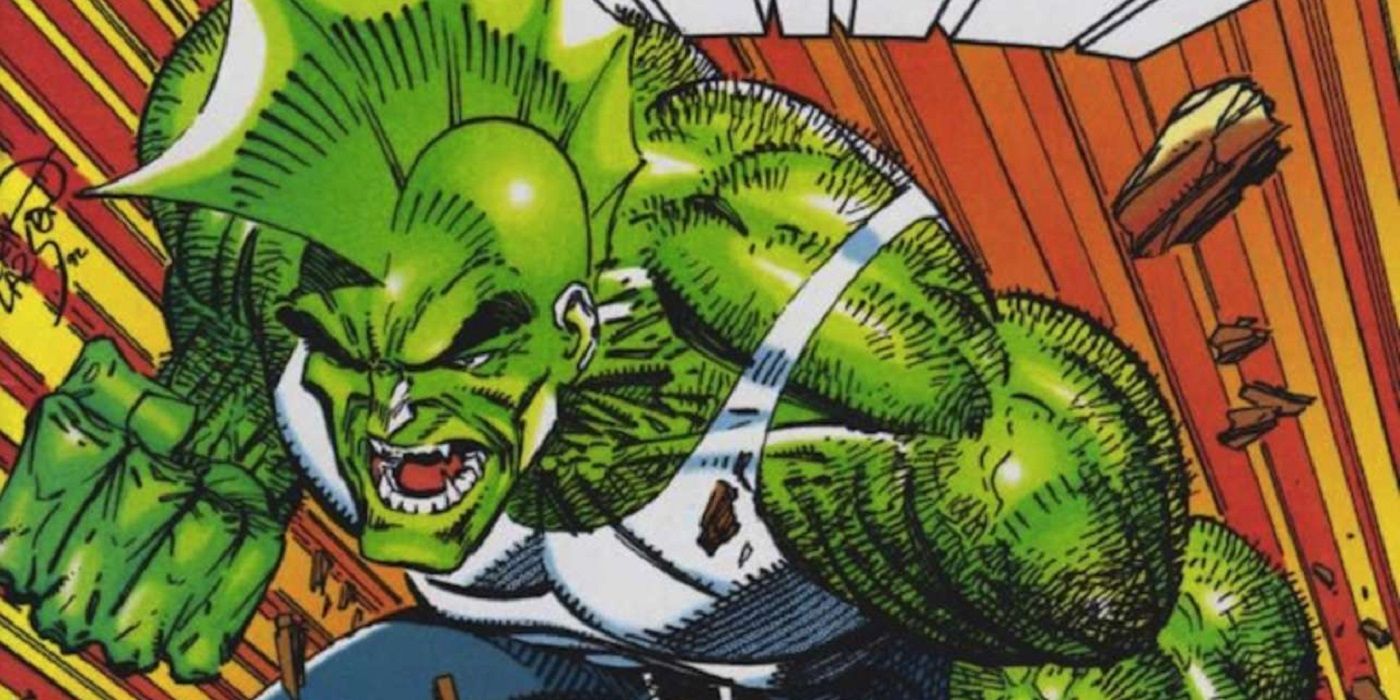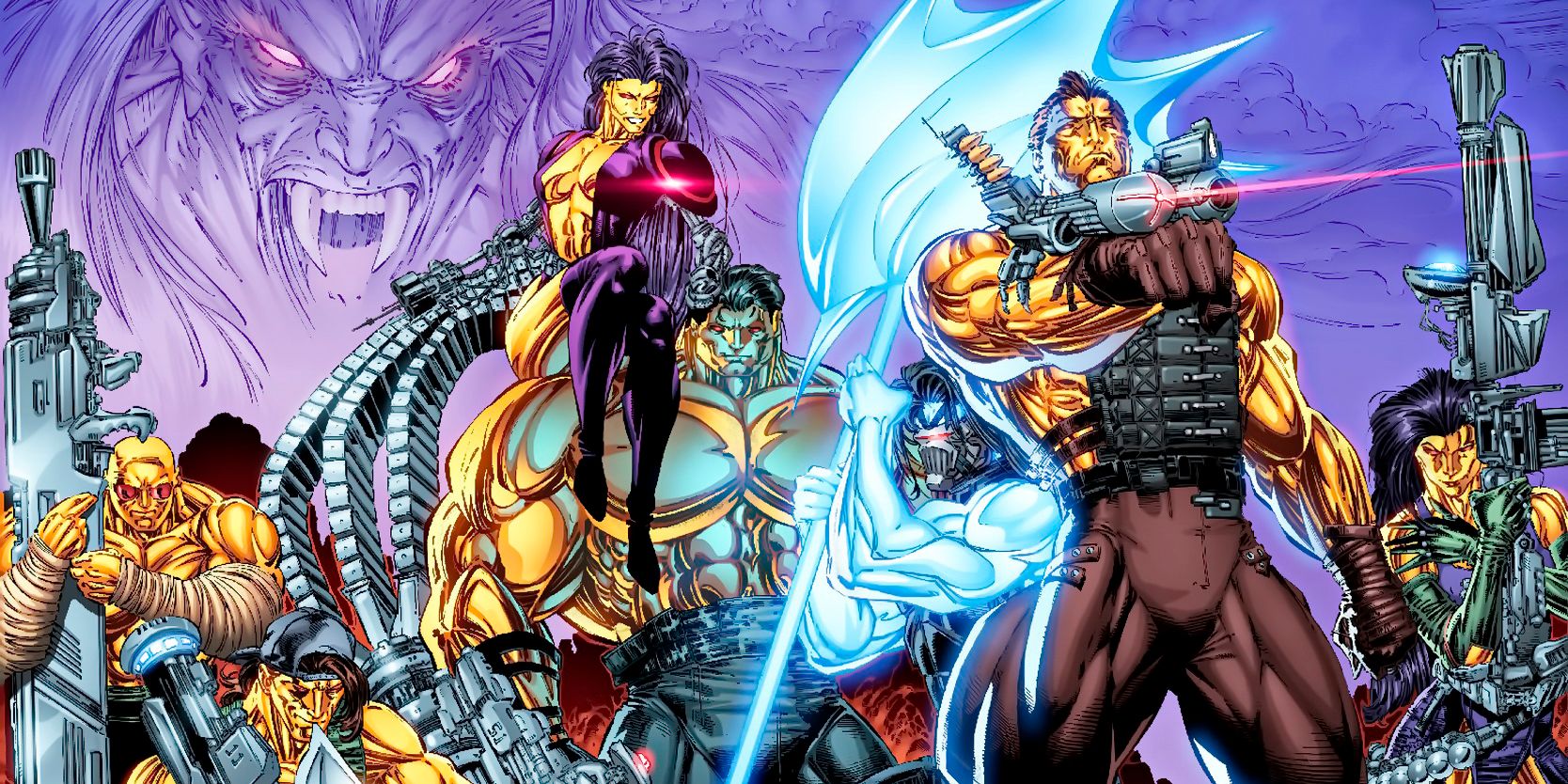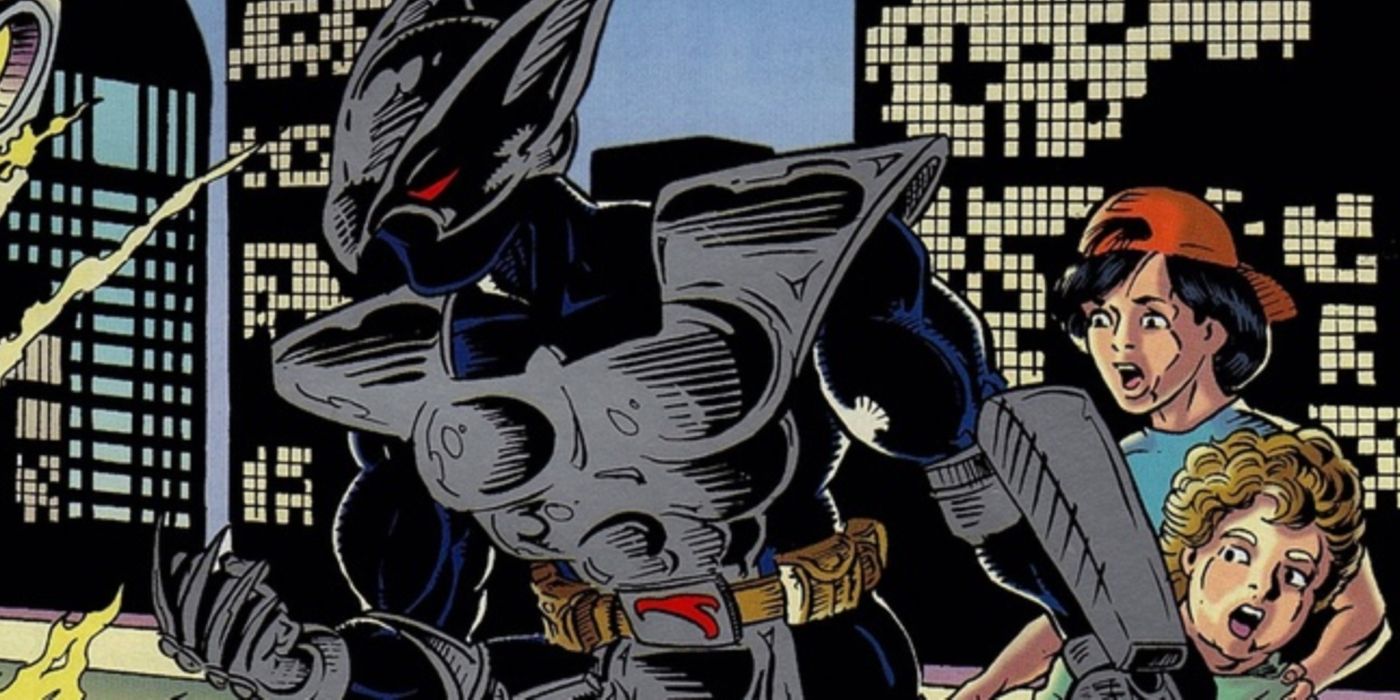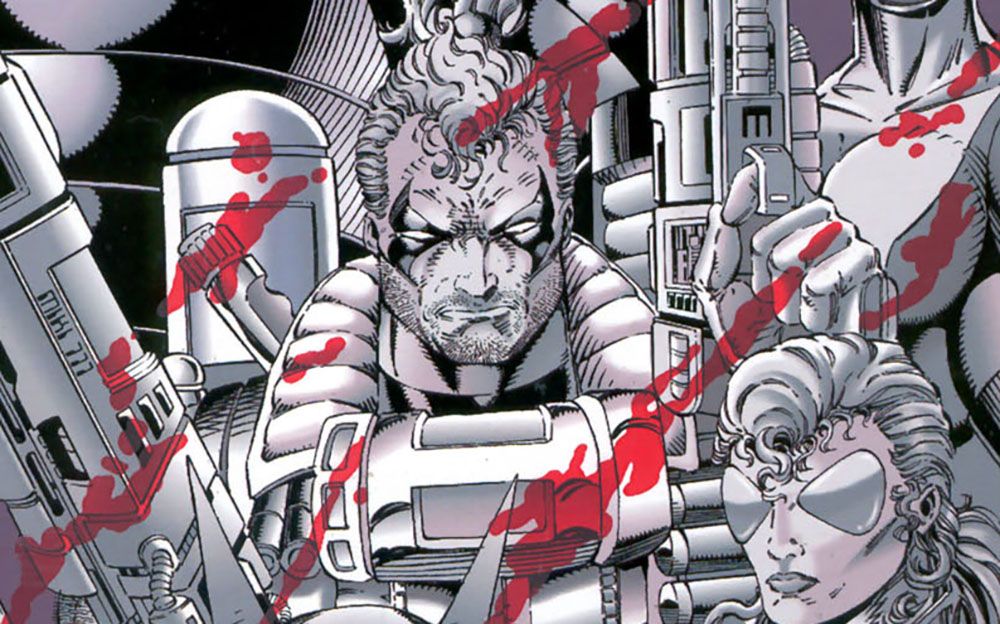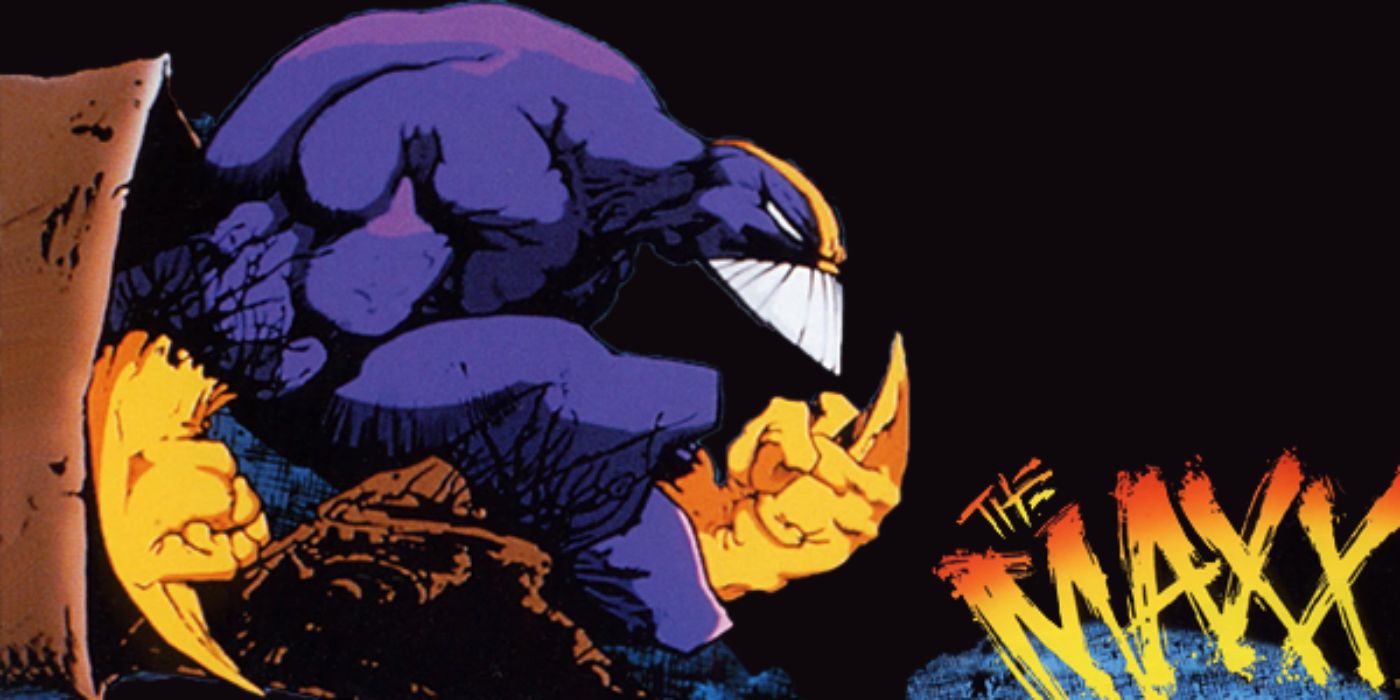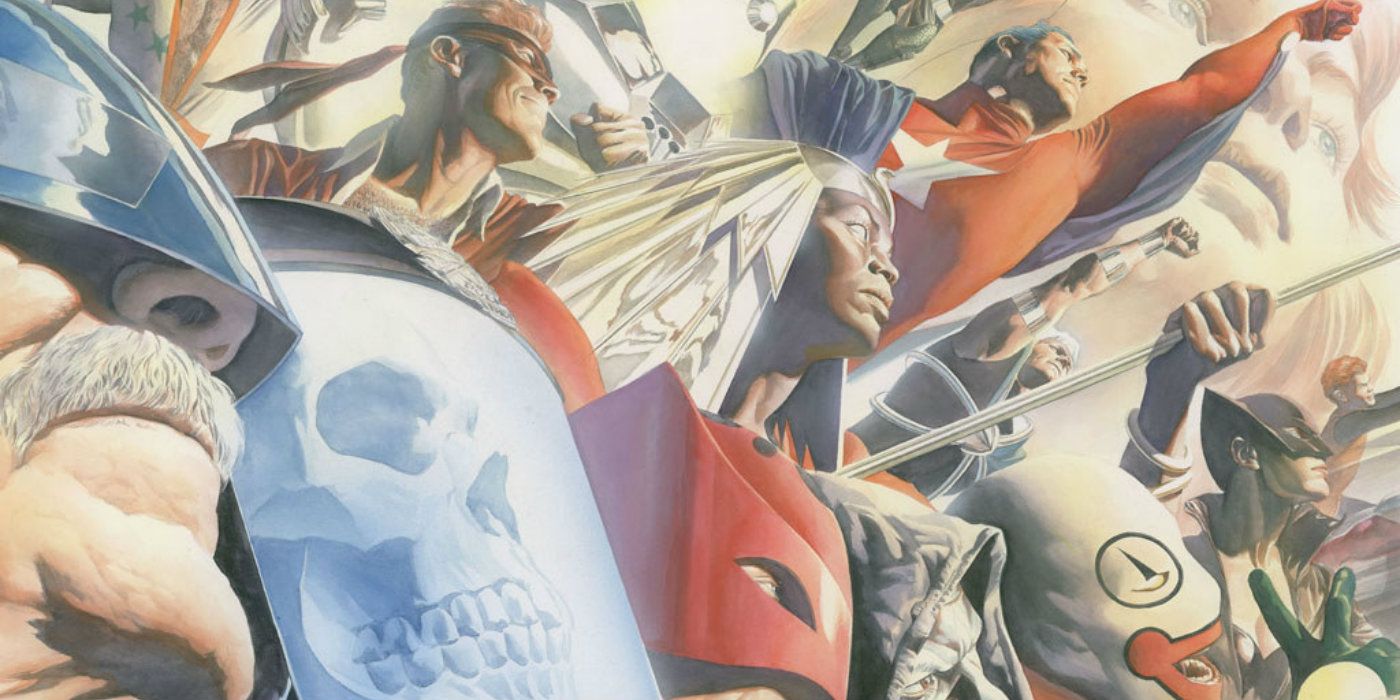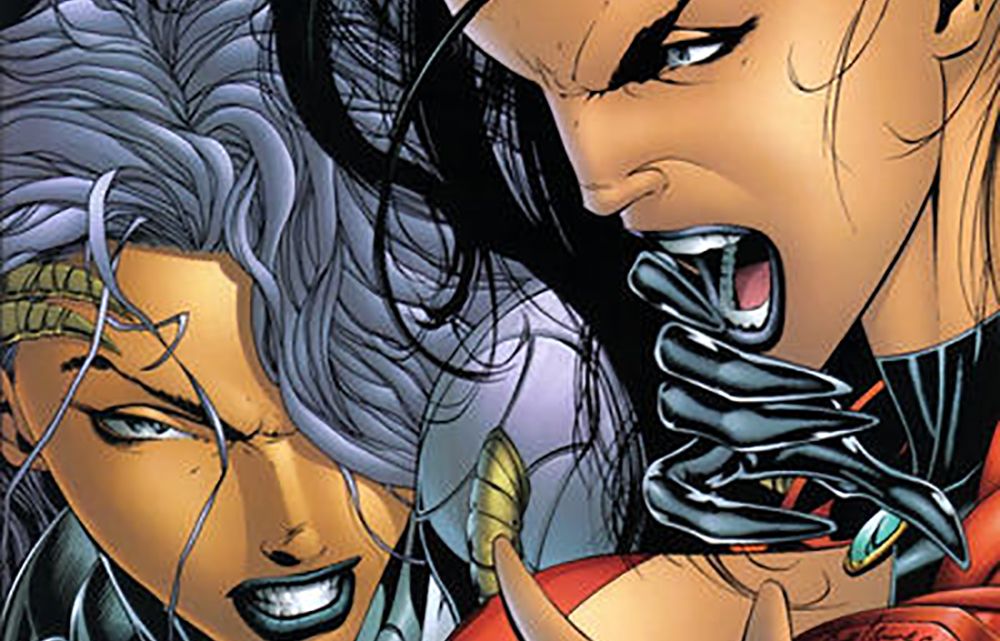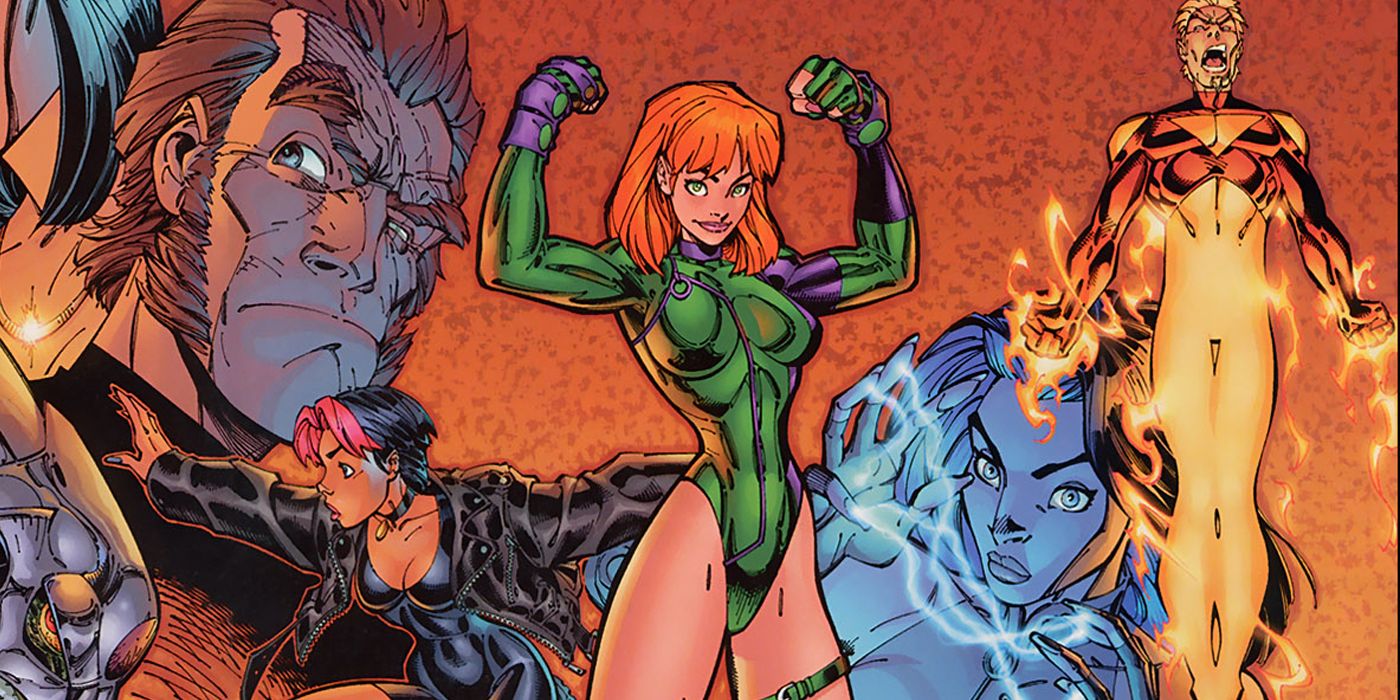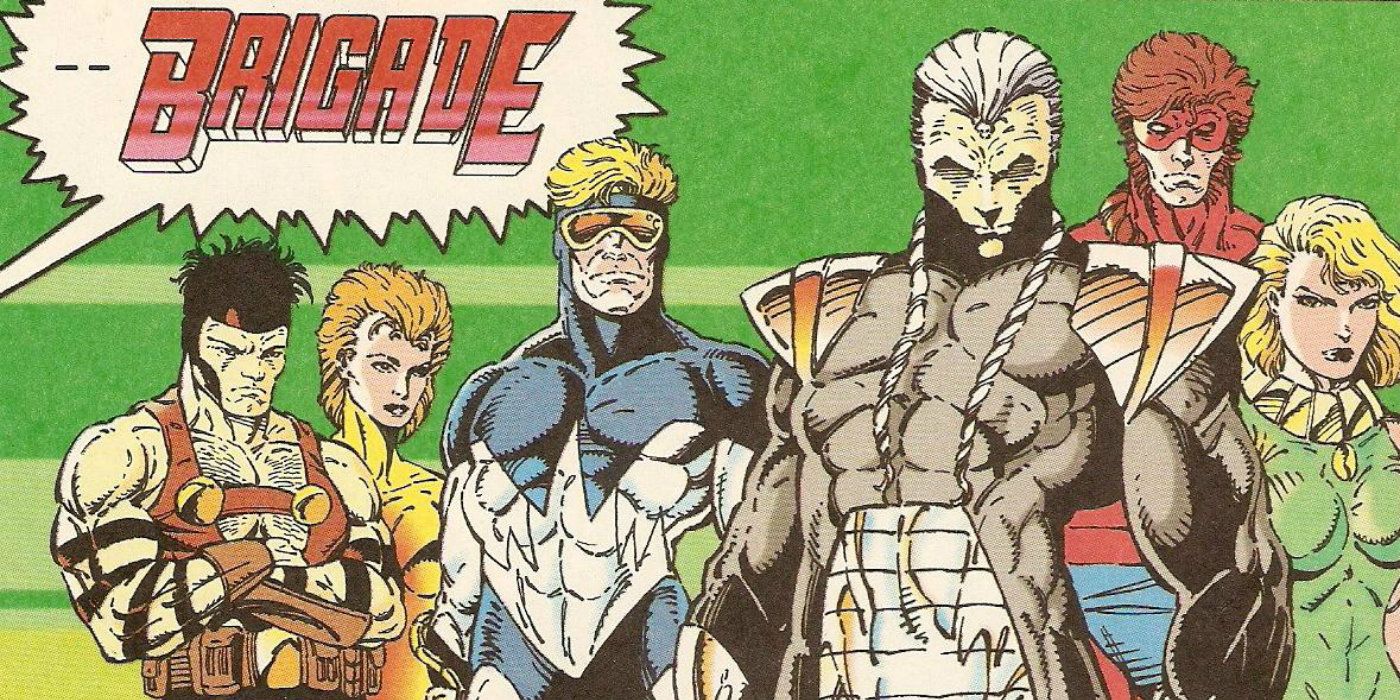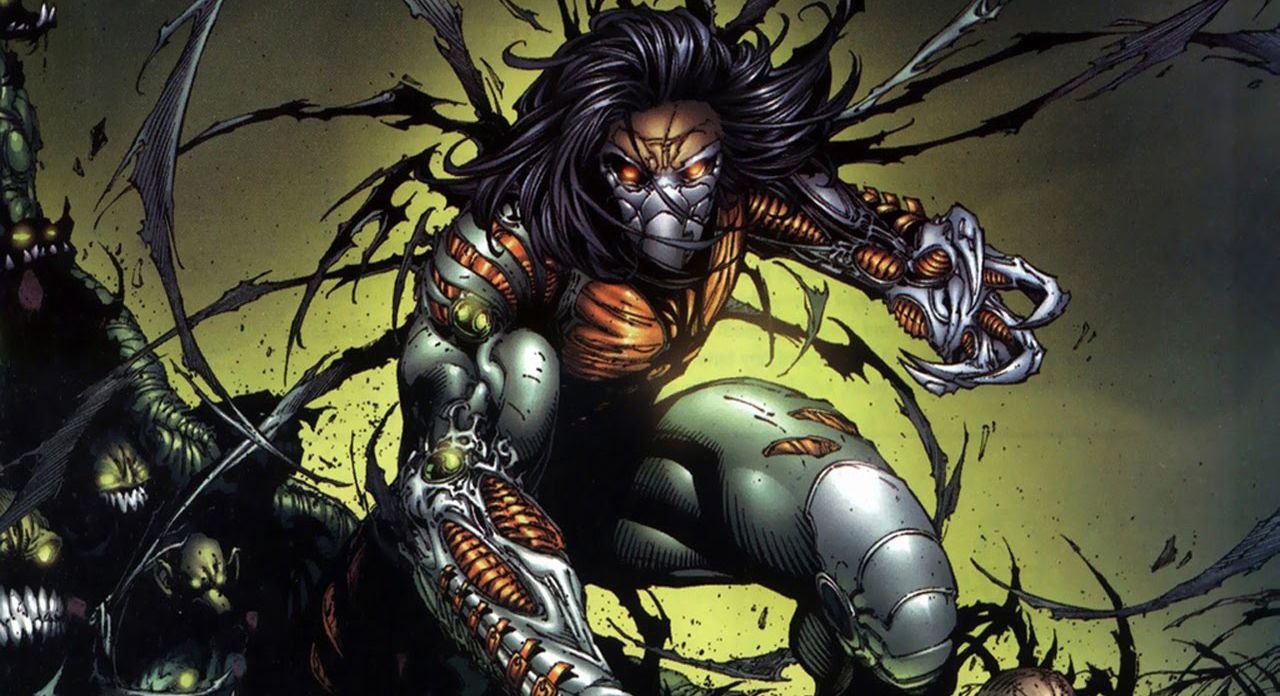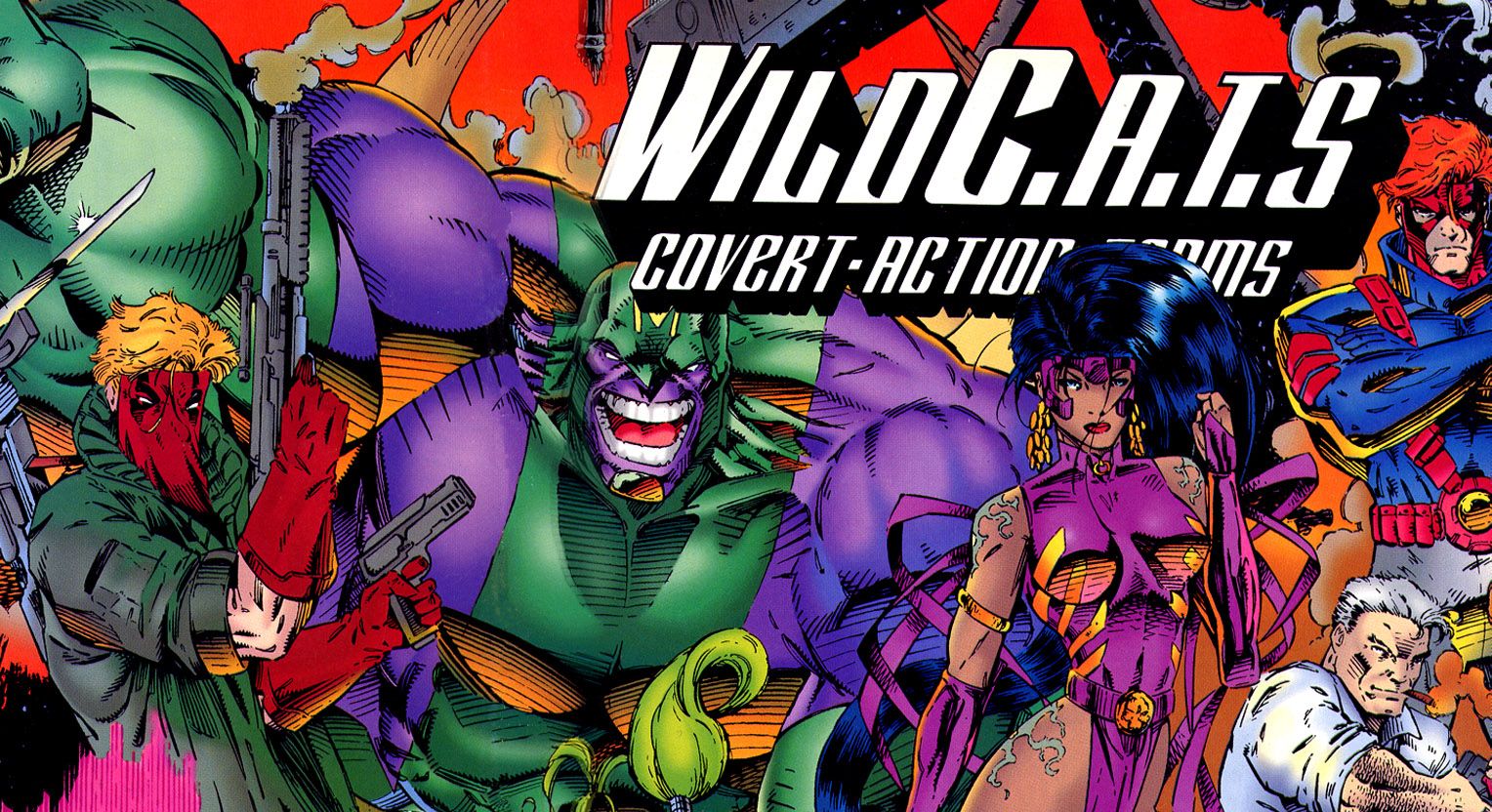Image Comics came into being when six creators who previously worked at Marvel Comics decided they wanted to branch out and establish creator control. Todd McFarlane, Jim Lee, Erik Larsen, Jim Valentino, Marc Silvestri and Rob Liefeld all had legitimate gripes with the way Marvel operated, so they decided they could do it better themselves. In many cases, they were right. Image Comics has become a standard within the industry, with 25+ solid years of publication resulting in some of the best creator-owned content in the genre. We have them to thank for the likes of The Walking Dead and Saga as well as many others presented here on this list.
Granted, you can't churn out nothing but hits for 25 years -- sooner or later, you are going to publish books that don't make the mark. Image has quite a few bad series under its belt, many of which were penned by the men responsible for founding the company, but it's all about growth and development over at Image. The company formed six studios under its brand including Todd McFarlane Productions, Wildstorm, Highbrow, Shadowline, Top Cow and Extreme Studios. All have churned out hits while accompanied with some duds and we have our top picks for each side of the field.
15 YOUNGBLOOD
Youngblood was an Image launch title released by Rob Liefeld in 1992. The series featured a team of superheroes sanctioned by the United States Government for operation around the world. It included dozens of members over the years, but notably included Badrock, Shaft, Chapel and Vogue on its roster. The principal idea of Youngblood revolved around the idea that superheroes were treated like celebrities. In addition to going on adventures and beating up bad guys, they would also endorse products and make appearances on television shows. Youngblood was the comic that introduced Image Comics to the world, making it significant in the history of comics... but that doesn't mean it's a good series.
There are a number of reasons why Youngblood didn't live up to the hype and they aren't limited to the desire to draw ammunition pouches. Story content was hit or miss, but mostly forgettable throughout Youngblood's run. While the series succeeded in launching the idea of shared universes outside Marvel and DC Comics, it never really established itself as a book readers lined up to read. Much of the art was drawn to be splashy and gain attention, but the story content was lacking in form and substance. Ultimately, Youngblood's significance has everything to do with Image Comics and nothing to do with the pages inside the book.
14 SPAWN
Spawn was the launch title put out by Todd McFarlane with Spawn #1 in 1992. McFarlane's unique artistic style promoting the detail of everything on the page coupled with his intricately woven storytelling talents helped establish the character. While delays in printing kept readers from getting their hands on early issues, the series endured and remains one of Image Comics' most enduring to this day. Spawn tells the story of Al Simmons, a deceased special forces operative who makes a deal with a devil to come back to life. Unfortunately, he returns as a hellspawn five years after his demise, making a return to his now-married wife something of a problem. Over the course of publication, Spawn gains powers, loses them and takes on both heaven and hell.
While all of the artists and writers who formed Image Comics are certainly talented, McFarlane stands above them all thanks to his unique skills. His ability to combine amazing artwork with his words has made Spawn a lasting example of why creator-owned storytelling is important. Spawn was even recognized by Hollywood for its unique story, which is why an animated series and live-action film have been made. There is even talk of a rebooted film franchise with Jamie Foxx eyed to play the lead role. Ultimately, Spawn works because McFarlane has retained control over the character since its inception. He has allowed guest writers and artists to work on the series, but always has his hands at the wheel.
13 CYBERFORCE
Marc Silvestri launched his first series at Image Comics with Cyberforce #1 in 1992. The series followed a group of mutants who were captured by a corporation intent on world domination called Cyberdata. They performed experiments on the group of mutants and helped to enhance their existing abilities with the help of cybernetic implants. Their intention was to form a group of what they called S.H.O.C.s, or Special Hazardous Operations Cyborgs, but the mutants escaped and formed a team of their own they called Cyberforce with the intention of destroying their creators. The team consisted of seven characters including Ballistic, Cyblade, Heatwave, Impact, Ripclaw, Stryker and Velocity.
Cyberforce was as beautifully illustrated and colored as any Image Comics publication released at the time, but its story lacked substance. Subsequently, it never achieved a great deal of success and only ran for a few miniseries and a straight-run of 35 issues. It has been revived and then cancelled after 11 issues. There was a planned animated series for Fox Television, but it never made it beyond the planning stages. Cyberforce had some interesting characters, but the story was somewhat derivative of others published at Marvel making it less appealing to new readers, which is why it never seemed to get off the ground.
12 SAVAGE DRAGON
The Savage Dragon was the title launched by Erik Larsen when he made the move to Image Comics and seeing as the book is still in publication, he may have made the right move. Unlike most comic books published since the genre first began, The Savage Dragon established itself with a real-time continuity. This means that the characters in the book age, die and don't get resurrected and things progress from the beginning to an eventual end. It has allowed Larson to create a truly unique universe of characters who have made a significant impact on the shared Image Universe and the comic book industry as a whole. The series begins with the titular character operating as a police officer, but has evolved into a series following the exploits of his son who has grown up and become a superhero/cop like his father.
Larsen has been able to illustrate and write all but one issue of the series, which has run for over 230+ issues making the series one of the longest to have been written and/or illustrated by only one creator. This has allowed him to create an enduring universe of hundreds of characters with a history lasting over 25 years. Savage Dragon has won numerous awards and was even named by IGN as the 95th greatest comic book hero of all time. That's a significant achievement when you consider the history of comics and plethora of characters prior to The Savage Dragon hitting the shelves.
11 WETWORKS
Wetworks was brought to Image Comics under the Wildstorm label by Whilce Portacio and Brandon Choi in 1994. The series ran as an ongoing title for four years before concluding in 1998. It had a revival series in 2006, which lasted for another two years before ending in 2008. The series was meant to launch with the publisher, but was put on hold due to the death of Portacio's sister. He returned with the series two years later. Wetworks follows the covert operations of Team 7 who came in contact with golden symbiotes on a suicide mission (they didn't realize it was a suicide mission at the time and were double-crossed). They were enhanced by their new symbiotes and went on to become a superhero team.
When it came out, Wetworks had a lot of potential, but it failed to maintain a cohesive story fans could enjoy. The series' artwork by Portacio was enhanced by bold uses of color, but the story by Choi and then Mike Carey in the second series failed to garner much of an audience. By the end of the series, it was cancelled prematurely due to low sales and a lack of true direction for the characters and setting in which the book was placed.
10 SHADOWHAWK
ShadowHawk was brought to Image by Jim Velentino in 1992 after previously introducing the character in the Malibu Sun free promotional magazine earlier that year. He first debuted in Liefeld's Youngblood #2 before gaining his own book. ShawodHawk is a role hundreds of thousands of people have undertaken throughout history including a cowboy, a musketeer and many others. Whoever possesses the power ofthe ShadowHawk gains superior agility, stealth, sight, speed, strength and other combat-enhanced abilities making them superior fighters. In the Image Universe, there have been a few people to take on the role, but it began with a young man named Paul Johnstone in Harlem.
ShadowHawk is one of those Image books that was really well done, but hasn't gone on to receive the attention it deserves. Since the character first appeared, there have been less than 140 books featuring him, which is a shame. The long backstory of the ShadowHawk allows for a writer to create any number of interesting characters for future books. The series even delved into a fictitious "silver age" of Image Comics to cover a ShadowHawk from the past as well as one from ancient Egypt. The art in these books was certainly impressive, but the storytelling is the reason readers kept coming back for more.
9 BLOODSTRIKE
Bloodstrike was created by Rob Liefeld for Image Comics back in 1993. He introduced the series with a gimmicky cover (all the rage in he '90s), which featured a blood-spattered special edition. The series revolved around a top secret squad of super-powered assassins, codename: Bloodstrike. The group of six included Cabbot Stone, Fourplay, Deadlock, Shogun, Tag and Chapel, all of whom operated under direct command and control of the U.S. Government. The twist for this book was that for anyone to be a member, they had to have previously died. Each member was resurrected via a special government program called Project: Born Again.
Rob Liefeld may have been the creative genius behind Deadpool, Cable and Domino, but his work under Image was less impactful on the genre. Bloodstrike lacked creativity, it failed to weave a cohesive story and while we do feel bad about ragging on the man's artwork, Liefeld's style of "overdrawing" everything to include adding equipment where nobody would ever wear it tends to wear on the readers after a while. This book lacked any true substance and it only ran for 22 issues even though more were initially planned. After an 18-year hiatus on comic book store shelves, issue #26 was released, but without Liefeld's name attached. It ran through issue #33, but went into hiatus and hasn't been seen since.
8 THE MAXX
The Maxx was brought to Image Comics by Sam Kieth in 1993 as a monthly series that ran for 35 issues. It told the story of the titular hero who lived in both the real world as well as an alternate reality simultaneously. While in the real world, Maxx is a vagrant, but in the Outback, he is the lone protector of the Jungle Queen. The Jungle Queen has a real world influence as well: Julie Winters, a social worker who works tirelessly to help the Maxx. She has no understanding of the Outback, but is integral in both realities. The series delved into concepts including dissociative disorder, homelessness and insanity in a way few comic books would ever dare attempt. It was later adapted into a 13-episode television series, which was acclaimed and appreciated by fans.
The '90s didn't feature many books that got people thinking about how a story was written nor did it have a great deal of characters who really made you think. The Maxx was a rare example, like Neil Gaiman's Sandman series for Vertigo, that really made the reader want to dive in deeper to understand who exactly they were reading. The series also featured beautiful artwork by creator Sam Kieth who expressed himself by showcasing how different the real world, often shown as dark and depressing, could look completely different from the alternate reality of the Outback.
7 PITT
Dale Keown was well known for his work on The Incredible Hulk series when he left Marvel to join the Image Comics team in 1992. Pitt is an alien/human hybrid who was genetically engineered to become a killing machine. He's a giant, grey behemoth with enlarged claws and teeth, but lacks a nose... just don't point that out if you ever meet him. the character first appeared in Liefeld's Youngblood #4, which served to introduce the character to the Image universe. He got his own series the following year, which ran for only 20 issues.
As we mentioned, Keown is best known for his work on The Incredible Hulk and while his time on that series is some of the character's best, he didn't stray far enough away in creating Pitt. Let's face it, this is a Hulk doppelganger with little to no substance. The artwork was amazing, but the character wasn't developed well enough to get away from being compared to Bruce Banner's alter-ego. Pitt's powers are nearly the same: he is super strong, leaps up to six miles in a single bound and has intense durability. Granted, the Hulk doesn't sport giant talons on his fingers that can cut through anything and he doesn't have the ability to read minds, but those additions didn't stray far enough away to fully establish this character.
6 KURT BUSIEK'S ASTRO CITY
Kurt Busiek's Astro City was brought to Image Comics by writer Kurt Busiek and illustrator Brent Anderson in 1995. The books featured cover art by Alex Ross and they were a huge hit for Image's imprints, Homage Comics and WildStorm. The series consists of three separate volumes encompassing more than 100 issues printed since 1995's six-issue miniseries. Astro City tells the tale of the titular city, which is home to a large number of superheroes of all kind. Instead of following a single core group of characters, the series followed a single character or small group across one to two issues or more. Often, the point-of-view would shift to that of minor characters watching the events unfold.
Astro City is one of those series that has a lot of superheroes, but doesn't necessarily focus entirely on them. It presents superheroes in a realistic world-view with regular people going about their business in a world/city full of superpowered beings. In many ways, it follows the same class of stories as Kingdom Come, Powers, Watchmen, and Busiek's own Marvels, which was also painted by Ross. Story is the absolute focus of the series, which makes it one of the best to come out of Image Comics over the years. It is even being adapted into a television series though not many details have yet to be released at the time this article was written.
5 ALLEGRA
Allegra was a short series published by the WildStorm imprint under Image Comics in 1996. The series was created by Steven T. Seagle with illustrations provided by Scott Clark and Chris Carlston. Unlike the other series on this list, Allegra wasn't intended to continue as an ongoing series and was only ever published as a four-issue miniseries. The story followed the titular character in the year 2065. She worked as the head of security for the sky city, Midian, which was one of only two sky cities orbiting Earth. Allegra searches for her past, which remains unknown to her in a world ravaged by the Gen-Virus.
If that description was confusing to read, you aren't alone in thinking so. The book suffered from a plotline that was difficult to follow and generally uninteresting to read. The artwork was well-drawn, but featured as much unnecessary cleavage as the '90s would allow... which was a lot for the time. You would be hard-pressed to find anyone who read this book or was looking for it in a back-issue bin in their local comic book shop. We wanted to include at least one miniseries on this list due to the fact that Image has published a number of duds over the years, but this was, by far our favorite... or least favorite depending on how you look at it.
4 GEN13
Gen13 was the brainchild of Jim Lee and Brandon Choi who paired up with J. Scott Campbell for illustration when they brought the book to Image under WildStorm in 1993. The series follows the adventures of teenage superheroes including Caitlin Fairchild, Grunge, Freefall, Sarah Rainmaker, Burnout and John Lunch, all of whom are children of Team 7—another of Jim Lee's creations. Gen13 is one of the more successful books for Image having published four separate volumes totaling more than 120 books. The series was even adapted into an animated film, which was released in 2000 outside the United States.
Prior to leaving Marvel for Image, Jim Lee's most notable work was on the various X-Titles in publication. His time working on a series devoted to young people with superhuman abilities clearly transferred into the creation of Gen13, which loosely follows the same general concept. When you write teenage superheroes well, it's probably best to stick with it. The first series of 20 issues introduced a slew of characters who were interesting and even relatable. This helped to keep the series going even after the original creative team left it in the hands of others. It was treated well by John Arcuri and Gary Frank who managed to up the game. It suffered when Scott Lobdell took over, but Adam Warren picked it up and made a lasting impact. These books are a great read and a fun way to get into the shared WildStorm universe.
3 BRIGADE
Brigade was introduced as a spinoff series to Youngblood. Both were created and designed by Rob Liefeld (who did some cover work on Brigade), but Liefeld handed over illustration duties to Marat Mychaels. The series follows the leader, Battlestone, a former member of Youngblood who was expelled after several members under his command were killed. He later formed the team Brigade with an initial roster including Boone, Lethal, Kayo, Thermal, Atlas and Stasis though this roster was eventually expanded to include dozens of individuals. The team disbanded and reformed a number of times before finding permanence. Brigade ran for four published volumes of 31 total issues between 1992 and 2000.
Again, we don't want to rag on a comic book creator, especially one with as successful a career as Mr. Liefeld, but this book wasn't at all interesting. The illustration wasn't up to the standard we had come to expect from an Image Comic at the time and the story, like many on this list, lacked any real substance. There was nothing compelling that could bring a reader to want to see another issue. Like many on this list, it lacked in sales due to relatively low interest and the series went bust. Liefeld tried to revive the series in 2010 by writing it, but it never made it beyond a single issue.
2 THE DARKNESS
The Darkness was first brought to Image under the Top Cow Productions imprint in 1996 by series creator Marc Silvestri, Garth Ennis and David Wohl. The series follows the story of a Mafia hitman, Jacki Estacado, who became the bearer of The Darkness on his 21st birthday. The Darkness is an elemental force, which allows Estacado to tap into an alternate dimension and control the demons living there. He commands these demons to do his bidding, which often involves killing people. The Darkness is established as a living power and the embodiment of the spirit of Chaos dating back to the beginning of time. There is a competing force called the Angelus and with both powers in existence, the concept of the Witchblade came into being to serve as a balance between them.
Like Witchblade, which we would have featured on this list but decided to go with The Darkness instead (feel free to light us up in the comments!), the series features an intricately woven backstory. Each character has substance that makes you love them or hate them in such a way you have to know what happens next, which is why you are definitely going to buy next month's issue when it comes out. The storytelling is compelling, the art is beautiful and the universe it creates is one we can see thousand of stories unfold. The Darkness has been adapted into two video games and a film has been in development since 2004.
1 WILDC.A.T.S.: COVERT ACTION TEAMS
WildC.A.T.S.: Covert Action Teams, more commonly referred to simply as Wildcats was created by Jim Lee and Brandon Choi as an early title under WildStorm for Image Comics in 1992. The title was Lee's initial launch title for the company and his first creator-owned project. This was the book that helped to launch his shared WildStorm Universe, which would be expanded upon in future titles. The series revolved around two alien warring races, the Kherubim and the Daemonites. The two races came to Earth where the Kherubim created a race of half-breeds while their enemies used their mind control and body possession powers to fight them on Earth. The series featured 11 characters who were expanded upon by various artists and writers over the years.
Wildcats could have been a widely popular book and it was at first. The initial series ran for 50 issues and people bought it like hotcakes, but the second series failed to gain much ground. That only ran for 28 issues with the third incarnation of the team only achieving 24. Alan Moore and Grant Morrison even came on board at one point try and revamp the series and widen the original story concept, but they never achieved the success they had in previous titles. Ultimately, the series lost its audience and attempts to revive it have been unsuccessful beyond only a short run of issues.

